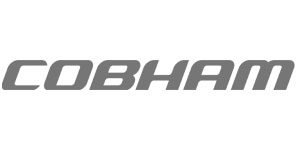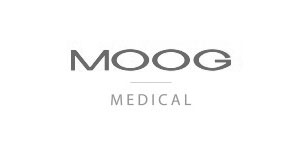Medical / Life Sciences
At Valence, we have over two decades of surface treatment experience with medical device components. We are equipped to meet the most demanding tolerances and complex geometries. Valence has best in class lead times with the highest standards of quality. Valence works closely with our customers in the advancement of technology for the medical industry.
Medical Scope of Work
Optical, X-Ray, and Diagnostic Systems
Trays and Equipment
Blood irradiator
Dental Tools and Equipment
Oxygen Systems
Infusion Therapy
Key Takeaway
- Valence boasts over 20 years of expertise in surface treatment for medical device components, ensuring precision and complex geometry capabilities.
- Valence offers industry-leading lead times while upholding the highest quality standards, supporting technological advancements in the medical sector.
- The company specializes in surface treatment for a range of medical equipment, including optical, X-ray, and diagnostic systems, trays and equipment, dental tools, oxygen systems, and infusion therapy devices.
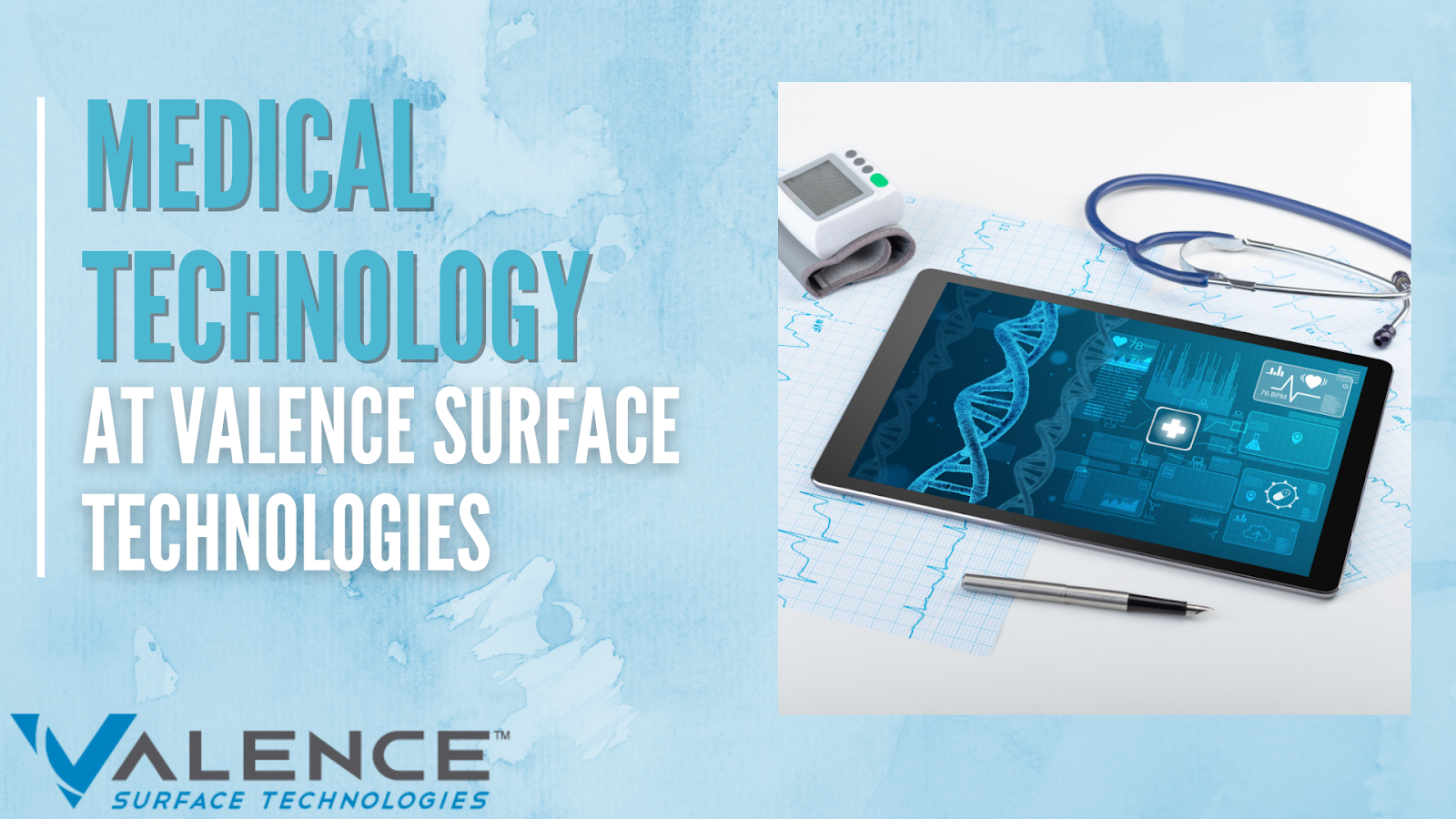
In an era where technology plays a pivotal role in healthcare, Valence Surface Technologies emerges as a pioneering force, revolutionizing medical technology through specialized coatings for essential medical device components. At the forefront of innovation, we are reshaping the future of healthcare by ensuring precision and excellence in surface finishing. Explore how our cutting-edge solutions are transforming the industry, fostering advancements that redefine the standards of quality and performance in medical technology.
What Is Medical Technology?
Medical technology refers to the use of innovative tools, devices, and techniques in the field of healthcare to diagnose, treat, and monitor medical conditions. It encompasses a broad range of technologies, from advanced imaging devices to robotic surgical systems. The primary goal of medical technology is to improve patient outcomes, enhance the accuracy of diagnoses, and provide more effective treatments.
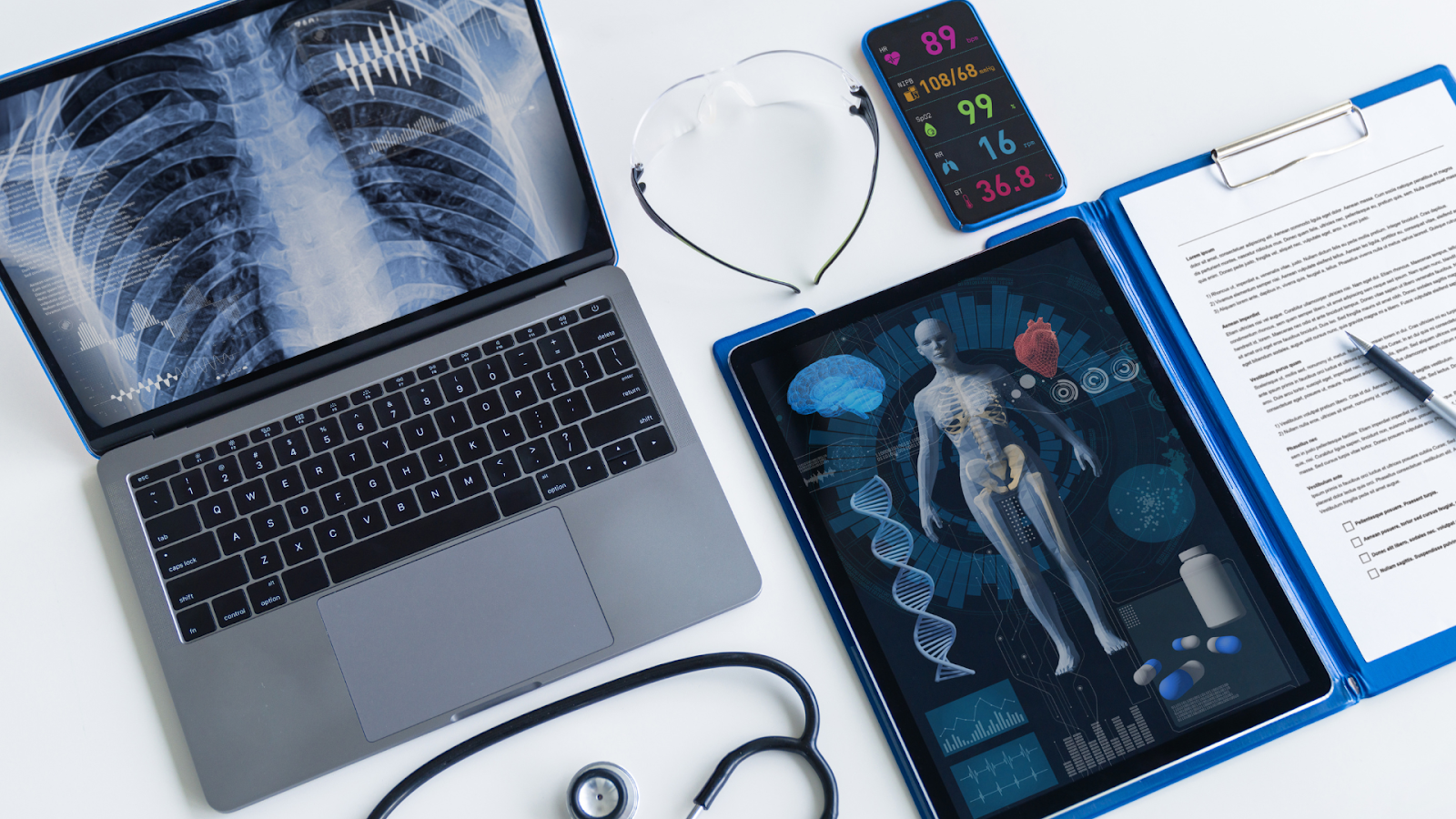
Discover The Future Of Aerospace Excellence With Valence Surface Technologies!Unlock a new realm of efficiency and quality with us. As the world’s largest independent aerospace product finishing company, we provide a completely integrated solution tailor-made for the aviation, defense, and space industries.
Get ready to soar to new horizons with Valence Surface Technologies. Elevate your aerospace projects and experience excellence like never before. |
Importance Of Medical Technology
Medical technology is the lifeblood of modern healthcare. It’s the catalyst propelling diagnostics, treatments, and patient care into a realm of precision and effectiveness that was once inconceivable. From diagnostic imaging machines that unveil the hidden intricacies of the human body to telemedicine platforms connecting patients to specialized care instantly, medical technology is the relentless engine driving breakthroughs.
The seamless exchange of electronic health records ensures patient data is readily available. With wearable health trackers monitoring vital signs and robotic surgery assisting skilled hands, it not only improves patient outcomes but also enhances the efficiency and precision of medical procedures.
How Does Medical Technology Work?
Medical technology utilizes innovative devices and techniques, such as diagnostic imaging machines, laboratory equipment, telemedicine platforms, precision medicine, robotic-assisted surgery, and wearable devices, to diagnose, monitor, and treat medical conditions.
These technologies enable accurate diagnostics, personalized treatments, and improved patient outcomes through continuous data analysis and enhanced precision in medical procedures
.
Benefits Of Medical Technology
Medical technology offers numerous benefits that positively impact both patients and healthcare professionals. Some key benefits include:
Improved Patient Outcomes
Medical technology has a transformative effect on patient care by facilitating accurate diagnoses, personalized treatment plans, and precise surgical procedures.1 This translates into better outcomes for patients, as healthcare professionals can target conditions more effectively and minimize complications, ultimately improving the overall health and well-being of individuals receiving medical care.
Enhanced Efficiency
Medical technology streamlines healthcare processes, optimizing the efficiency of care delivery. This, in turn, allows healthcare providers to offer faster and more efficient services to patients. Reduced waiting times and smoother healthcare operations improve the overall patient experience, leading to higher satisfaction levels among those seeking medical assistance.
Advanced Monitoring
Continuous patient monitoring, made possible by medical technology, offers invaluable real-time data on vital signs and health parameters. This continuous data stream empowers healthcare professionals to detect and address potential issues promptly, providing proactive interventions when necessary.1 Additionally, patients themselves can actively engage in monitoring their health, leading to better self-management and control over their well-being.
The Application Of Medical Technology
Medical technology encompasses a wide range of applications, significantly impacting healthcare. It plays a crucial role in diagnosis and treatment, utilizing advanced imaging techniques like X-rays, CT scans, and MRIs for precise visualization and anomaly detection.
Medical devices such as pacemakers, insulin pumps, and prosthetic limbs enhance patient well-being and support innovative interventions and rehabilitation. Continuous patient monitoring through blood pressure monitors, glucose meters, and wearable sensors empowers healthcare professionals with real-time data for informed decisions and personalized care.
Telemedicine, facilitated by telecommunication technologies, extends healthcare services, offering remote consultations and virtual doctor visits, enhancing patient accessibility, and streamlining healthcare delivery.
Historical Background Of Medical Technology
Medical technology has come a long way over the years, revolutionizing the healthcare industry and improving patient outcomes. Let’s take a look at the historical background of medical technology and how it has evolved over time.
- Early Innovations: The roots of medical technology can be traced back to ancient civilizations, where early techniques and tools were used to treat ailments. Practices like bloodletting and herbal remedies were common in ancient Egypt, Greece, and China.2
- Major Milestones: The 20th century witnessed significant advancements in medical technology.3 The digital revolution in the late 20th century further propelled medical technology with the advent of electronic health records and the use of computers for data analysis and diagnostics.
- Technological Innovations: The rapid development of technology in recent decades has had a profound impact on medical technology. From the invention of medical imaging devices like MRI and CT scans to the introduction of minimally invasive surgical techniques, medical technology continues to evolve at an exponential rate.
The Role Of Medical Technology In Healthcare
Medical technology plays a crucial role in shaping the future of healthcare. Let’s delve into the significant role that medical technology plays in improving patient care and driving innovation in the healthcare industry.
- Enhancing Diagnostics: Medical technology provides healthcare professionals with advanced diagnostic tools, enabling early detection and more accurate diagnoses. These technologies help identify diseases at an early stage, leading to timely interventions and improved patient outcomes.1
- Facilitating Treatment: Medical technology contributes to improved treatment options for various health conditions. From robotic-assisted surgeries to targeted drug delivery systems, medical technology enables more precise and effective treatments. This results in faster recovery times, reduced complications, and better patient experiences.
- Enabling Research and Development: Medical technology fuels innovation in healthcare. It supports research and development efforts, leading to new discoveries, treatments, and therapies. Continuous advancements in medical technology open doors to novel approaches to disease management and provide hope for patients and healthcare providers alike.
The Tools Used In Medical Technology
Medical technology relies on a wide range of tools and equipment to facilitate the diagnosis, treatment, and monitoring of patients. Let’s explore some of the essential tools used in medical technology and their significance in healthcare.
- Imaging Devices: Medical imaging devices, such as X-rays, CT scans, and MRI, are essential for visualizing internal structures and identifying abnormalities. These tools aid in the diagnosis and monitoring of various medical conditions.
- Surgical Instruments: Surgical instruments, both traditional and advanced, are critical for performing surgeries and other invasive procedures. Tools like scalpels, forceps, and laparoscopic instruments help surgeons carry out precise and minimally invasive procedures.
- Monitoring Devices: To monitor patients’ vital signs and health parameters, medical technology relies on monitoring devices like blood pressure monitors, ECG machines, and pulse oximeters.4 These devices provide real-time data, allowing healthcare professionals to respond promptly to any changes in a patient’s condition.
Alternatives To Medical Technology
While medical technology plays a critical role in modern healthcare, there are alternative approaches that can be considered, depending on the specific situation. Some alternatives include:
Conservative Management
Conservative management in healthcare refers to a strategy that prioritizes non-invasive and non-surgical approaches to address medical conditions. This approach typically involves therapies such as physical therapy, medication management, lifestyle modifications, and monitoring.
Non-Invasive Treatments
Non-invasive treatments in healthcare encompass a broad range of interventions that do not require surgical incisions or invasive procedures. These treatments may include medication therapy, physical therapy, radiation therapy, and various forms of external medical devices.
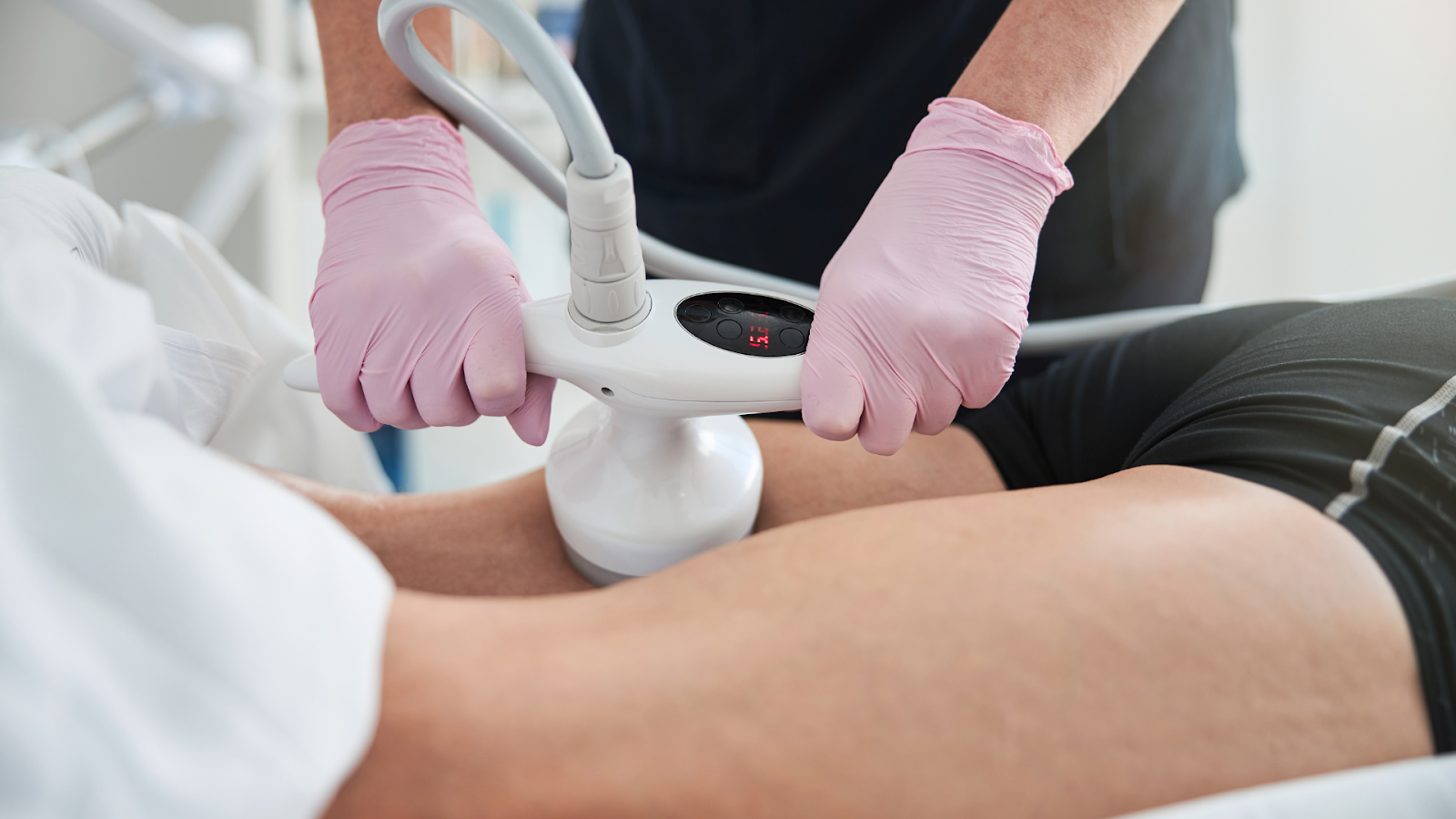
Complementary And Alternative Medicine (CAM)
Complementary and Alternative Medicine (CAM) encompasses a diverse set of healthcare practices and therapies that extend beyond conventional Western medicine. CAM includes approaches like acupuncture, herbal remedies, chiropractic care, and mindfulness-based practices.5 These therapies are often used in conjunction with traditional medical treatments to address a range of health issues.
Final Thoughts On Medical Technology
Medical technology is an ever-evolving force, shaping the landscape of healthcare by enhancing diagnostics, treatment, and patient care. It empowers both patients and healthcare professionals with precision, accessibility, and real-time data, ultimately improving the quality of healthcare. As the field continues to advance, it holds immense promise for the future, driving innovations that will further transform the way we understand and manage health and disease.
At Valence Surface Technologies, we understand the pivotal role that medical technology plays in shaping the full-service finishing industry. As the world’s largest independent aerospace product finishing company, we are committed to delivering exceptional surface finishing solutions to meet the unique needs of the aviation, medical/life sciences, defense, and space industries. Our integrated approach, combining advanced technologies and expertise, ensures that our clients receive the highest quality surface coatings and precision finishing for their critical components. Reach out to us today or request a quote to experience excellence in surface technology.
Learn more:
- Anodizing Aluminum: Types, Benefits, And Process Explained
- A Gold Standard Of Quality: An Overview Of Gold Plating Services For Aerospace
- High-Performance Nickel Boron Coating: Durability and Performance in One Package
Frequently Asked Questions About Medical Technology
What careers exist in medical technology?
Careers in medical technology encompass a wide range of roles, including biomedical engineers, clinical laboratory technologists, medical imaging technologists, and health informatics specialists. These professionals play vital roles in advancing healthcare and improving patient outcomes through the application of technology and scientific expertise.
What qualifications are needed to work in medical technology?
Qualifications for medical technology careers usually require a relevant bachelor’s degree, professional certifications, and sometimes advanced degrees, with a commitment to ongoing learning and staying current in the field.
What is the role of artificial intelligence in medical technology?
Artificial intelligence (AI) plays a significant role in medical technology by enhancing diagnostic accuracy, improving treatment planning, and enabling predictive analytics. AI algorithms can analyze vast amounts of medical data, identify patterns, and assist healthcare professionals in making more informed decisions.
How is medical technology regulated?
Medical technology is subject to regulations and oversight to ensure safety and efficacy. In the United States, the Food and Drug Administration (FDA) regulates medical devices and their manufacturing processes. Different countries have their regulatory bodies, such as the European Medicines Agency (EMA) in Europe.
What is the impact of medical technology on healthcare costs?
Medical technology can both increase and decrease healthcare costs. Initial expenses for advanced technology can be high, but they may lead to cost savings over time by improving patient outcomes and reducing the need for more expensive treatments. The net impact depends on various factors and healthcare contexts.
What are the ethical considerations in medical technology?
Ethical considerations in medical technology include patient privacy, equitable access, informed consent, research ethics, end-of-life decisions, AI biases, resource allocation, dual-use concerns, and the well-being of healthcare professionals. Ethical frameworks guide responsible technology use in healthcare.
How is data privacy handled in medical technology?
Data privacy in medical technology is ensured through strict regulations, encryption, access controls, and training for professionals. Patients have control over their health data, and companies employ secure storage practices to safeguard sensitive information.
What are the environmental impacts of medical technology?
Medical technology can reduce healthcare’s environmental impact through efficiency but contributes to electronic waste and carbon emissions due to equipment production and energy use in healthcare facilities. Proper disposal and sustainable practices are crucial for mitigation.
How does medical technology address health disparities and access to healthcare in underserved communities?
Medical technology addresses health disparities by enabling telemedicine, remote monitoring, and portable diagnostics, improving access to healthcare in underserved communities. It also streamlines administration, reducing costs and making healthcare more affordable for marginalized populations.
What are the cybersecurity challenges and solutions in the realm of medical technology?
Cybersecurity challenges in medical technology involve data breaches and patient safety risks. Solutions include encryption, software updates, network segmentation, employee training, and collaboration with cybersecurity experts.
Sources:
- Haleem, A., Javaid, M., Pratap Singh, R., & Suman, R. (2022). Medical 4.0 technologies for healthcare: Features, capabilities, and applications. Internet of Things and Cyber-Physical Systems, 2, 12–30. https://doi.org/10.1016/j.iotcps.2022.04.001
- Hajar, R. (2012). The Air of History (Part II) Medicine in the Middle Ages. Heart Views, 13(4), 158. https://doi.org/10.4103/1995-705x.105744
- Weatherall, D., Greenwood, B., Heng Leng Chee, & Prawase Wasi. (2012). Science and Technology for Disease Control: Past, Present, and Future. Nih.gov; The International Bank for Reconstruction and Development / The World Bank. https://www.ncbi.nlm.nih.gov/books/NBK11740/
- Jeffries, J. (2021, December 27). What Vital Signs Monitoring Equipment Does a Hospital Need? Infinium Medical. https://infiniummedical.com/what-vital-signs-monitoring-equipment-does-a-hospital-need/
- Tabish, S. A. (2018). Complementary and Alternative Healthcare: Is it Evidence-based? International Journal of Health Sciences, 2(1), V–IX. https://www.ncbi.nlm.nih.gov/pmc/articles/PMC3068720/

